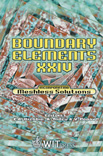Modeling The Experimental Environment For Shipboard ICCP Systems
Price
Free (open access)
Transaction
Volume
32
Pages
9
Published
2002
Size
543 kb
Paper DOI
10.2495/BE020401
Copyright
WIT Press
Author(s)
V G DeGiorgi, S A Wimmer, E Hogan & K E Lucas
Abstract
The use of boundary element methods to model electrochemical phenomenon such as the performance of shipboard impressed current cathodic protection (ICCP) systems has become well established in the research community. Previous work has concentrated on determining the accuracy of computational models by detailed comparison with experimental results; primarily physical scale model (PSM)results. Experimental results have been used as truth-values in these comparisons. Any differences in results were attributed to limitations in the computational modeling process. However, computational models have been built to represent ships in open sea. Physical scale modeling experimental work is performed in finite volume tanks. As in any experimental process, there are issues with boundaries. In this paper a systematic study is made of the affects that tank size and material has on predicted results. Various testing tank geometries and material conditions are modeled. The facility at NRL Key West is modeled as well as other combinations of tank geometry and material. Some combinations were created to determine the effects of variations and do not represent actual tanks.
Keywords





